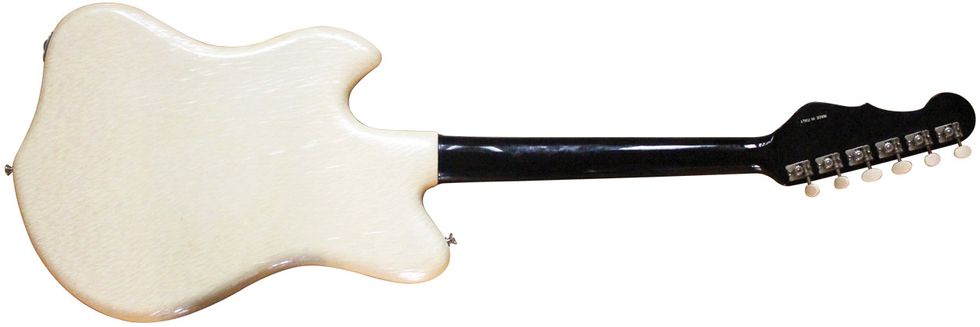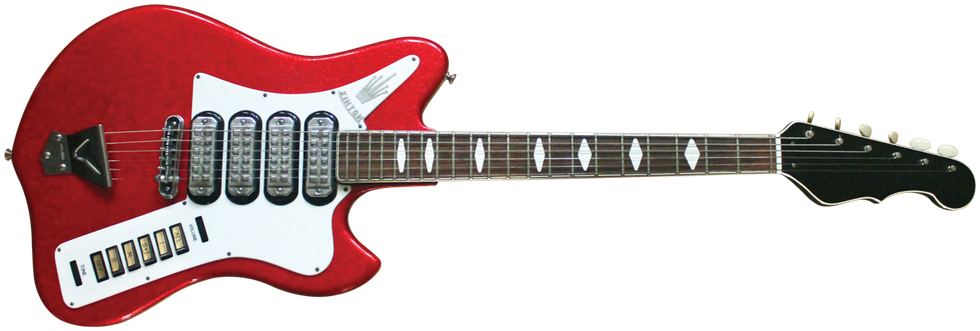Four pickups? Check. Sparkle finish? Check. Lots of switches? Check. Wacky shape? Check! Yes, this crazy Kinton-branded guitar checks all the boxes for a Wizard of Odd column and, as always, this little slice of vintage design comes with a cool story. So let’s take a journey over to Castelfidardo, Italy, and a musical instrument company started by Orlando Quagliardi. Mr. Quagliardi’s humble company was one of the earliest makers of guitars in Italy, and—along with many of the other Italian manufacturers—really dove into the electric guitar market in the early 1960s.
The Quagliardi factory produced guitars primarily with the brand name of Welson, but its other brands included Dynatone, Beltone, Wurlitzer, and Orpheum. Many of the Welson guitars seen in the U.S. were hollowbodies, and during the latter half of the 1960s, the company seemed to place all of its focus on interesting jazz boxes, semi-hollows, and violin-shaped guitars.
During the copy era of the 1970s, Welson guitars reflected Les Paul and SG designs, and Quagliardi even ventured into electronic keyboard production. The company had a rather good run that lasted into the early 1980s, and the quality of their instruments was really above average for the time and market they served.
The Kinton electric in Photo 1 hails from the ultra-cool early 1960s, when Welson instruments were most often solidbody examples of gonzo guitar design. The Kinton name was probably associated with a music store that sold Welson guitars. In fact, musical instrument shops that sold Italian accordions were highly likely to carry Italian electric guitars, complete with the same fantastic plastic and sparkle finishes. And check out that cute metal logo, complete with a shining crown! That little emblem was featured on many Welson guitars, and the factory even placed different names on there for special orders.

Welson guitars often featured large, diamond-shaped fret inlays and truly fabulous sounding mini-humbuckers with a sort of waffle-top pattern. In fact, to my ears, vintage Italian mini-’buckers are the best sounding pickups ever made. These units have a DC resistance of around 12k and sound bright, hot, and aggressive. Surprisingly, the four-pickup models are more common than the two-pickup versions, but they all feature Welson stamped pickup covers and tremolos. Though the six rocker switches (including a groovy “all” pickups option) are spring loaded, they’re reliable, and they’re positioned in a spot where I don’t knock them around. The quality of Italian electronics was very good at that time, and I always get a certain satisfaction when I open up these guitars and marvel at the fine soldering work and high-quality components.
This red sparkle finish is actually one of the tamer offerings from Welson, which also produced some truly wacky marble and striped celluloid guitars. The back of this guitar is covered in celluloid with some sort of woven texture that plays all sorts of tricks in different lights (Photo 2). And the truss rod on this set-neck guitar actually works really well! I often wonder how these Italian manufacturers transitioned from accordions to electric guitars with such ease, all the while using nontraditional methods to create some really cool designs. Many of the lesser-known Italian electrics can be made into true monster players, and a guitar like this one will withstand a lot of abuse because of its impressive build quality.
Watch the video demo:



















